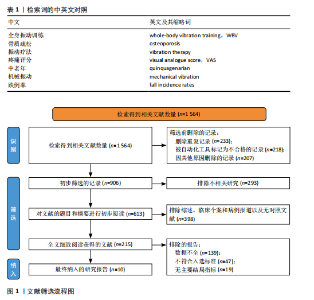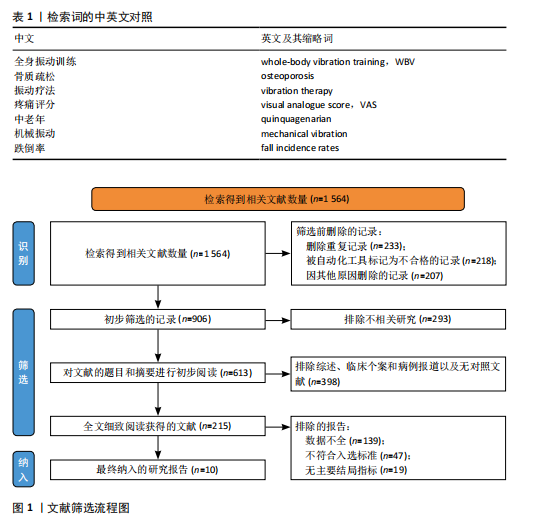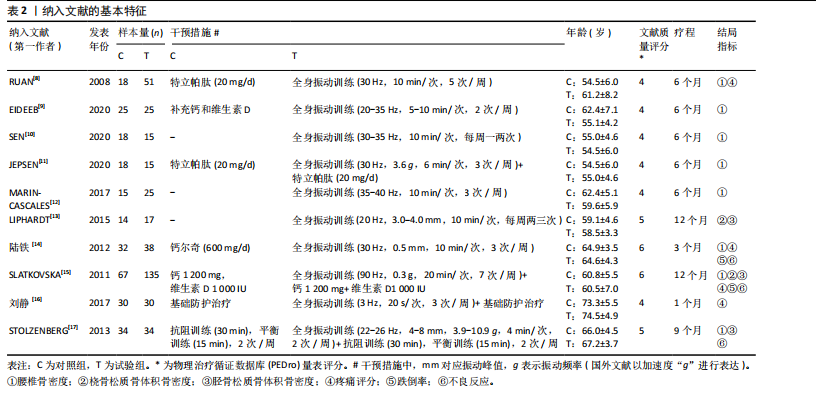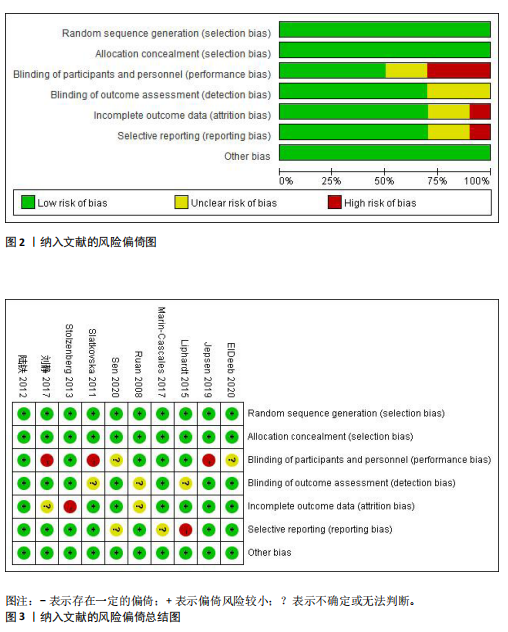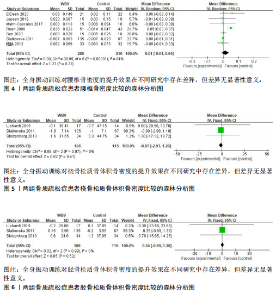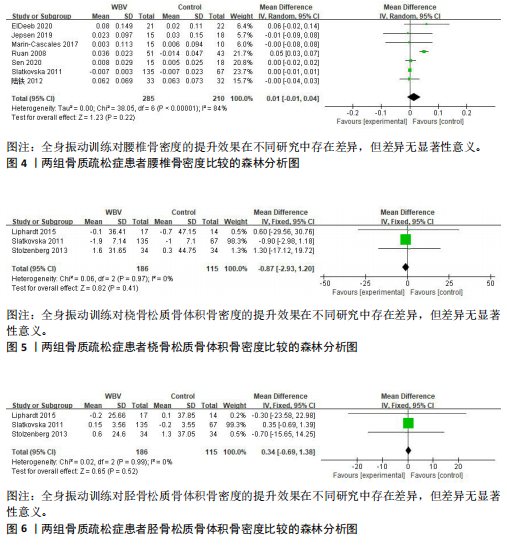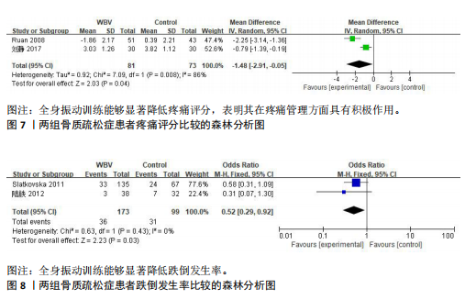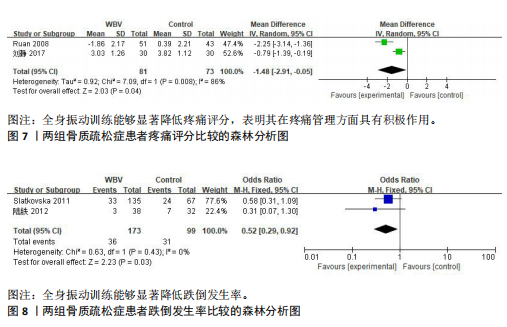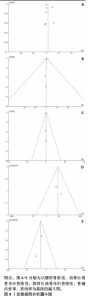[1] YONG EL, LOGAN S. Menopausal osteoporosis: screening, prevention and treatment. Singapore Med J. 2021; 62(4):159-166.
[2] ARCEO-MENDOZA RM, CAMACHO PM. Postmenopausal Osteoporosis: Latest Guidelines. Endocrinol Metab Clin North Am. 2021;50(2):167-178.
[3] LI W, CHEN M, CHEN F, et al. Vitamin D combined with whole-body vibration training for the treatment of osteo-sarcopenia: study protocol for a randomized controlled trial. Trials. 2024;25(1):638.
[4] SINGH A, VARMA AR. Whole-Body Vibration Therapy as a Modality for Treatment of Senile and Postmenopausal Osteoporosis: A Review Article. Cureus. 2023;15(1):e33690.
[5] 孙振双,曹留拴,邹丽丽,等.全身振动训练对骨质疏松患者平衡功能及跌倒效能的影响[J]. 中华物理医学与康复杂志, 2022,44(10):917-919.
[6] 李邗峻,徐道明,吴文忠,等.全身振动训练结合雷火灸治疗原发性骨质疏松症腰背痛的临床观察[J]. 中国骨质疏松杂志,2019,25(10):1445-1449.
[7] 王芃,蔡治东,江婉婷,等.单次运动对中老年人执行功能作用的网状meta分析[J]. 中国心理卫生杂志,2023,37(2):151-159.
[8] RUAN XY, JIN FY, LIU YL, et al. Effects of vibration therapy on bone mineral density in postmenopausal women with osteoporosis. Chin Med J (Engl). 2008;121(13):1155-1158.
[9] ELDEEB AM, ABDEL-AZIEM AA. Effect of Whole-Body Vibration Exercise on Power Profile and Bone Mineral Density in Postmenopausal Women With Osteoporosis: A Randomized Controlled Trial. J Manipulative Physiol Ther. 2020; 43(4):384-393.
[10] SEN EI, ESMAEILZADEH S, ESKIYURT N. Effects of whole-body vibration and high impact exercises on the bone metabolism and functional mobility in postmenopausal women. J Bone Miner Metab. 2020;38(3): 392-404.
[11] JEPSEN DB, MASUD T, HOLSGAARD-LARSEN A, et al. The combined effect of parathyroid hormone (1-34) and whole-body vibration exercise on physical performance in OSteoporotic women (PaVOS study): a secondary analysis from a randomised controlled trial. BMC Sports Sci Med Rehabil. 2020;12(3):54.
[12] MARÍN-CASCALES E, ALCARAZ PE, RUBIO-ARIAS JA. Effects of 24 Weeks of Whole Body Vibration Versus Multicomponent Training on Muscle Strength and Body Composition in Postmenopausal Women: A Randomized Controlled Trial. Rejuvenation Res. 2017;20(3):193-201.
[13] LIPHARDT AM, SCHIPILOW J, HANLEY DA, et al. Bone quality in osteopenic postmenopausal women is not improved after 12 months of whole-body vibration training. Osteoporos Int. 2015;26(3):911-920.
[14] 陆铁,仲维佳,周君琳,等. 全身振动对预防老年女性骨质疏松性骨折的作用[J]. 中华临床医师杂志(电子版),2012, 6(5):1113-1116.
[15] SLATKOVSKA L, ALIBHAI SM, BEYENE J, et al. Effect of 12 months of whole-body vibration therapy on bone density and structure in postmenopausal women: a randomized trial. Ann Intern Med. 2011;155(10):668-679.
[16] 刘静,吴文忠,徐道明,等. 振动治疗仪下核心稳定训练治疗骨质疏松症腰背痛疗效观察[J]. 中国康复,2017,32(6):481-483.
[17] STOLZENBERG N, BELAVÝ DL, BELLER G, et al. Bone strength and density via pQCT in post-menopausal osteopenic women after 9 months resistive exercise with whole body vibration or proprioceptive exercise. J Musculoskelet Neuronal Interact. 2013;13(1):66-76.
[18] 陈倩,李芳芳,刘丹,等. 1107例上海市社区40-60岁人群骨密度现状分析[J]. 医学研究杂志,2023,52(4):45-47,147.
[19] LIGOURI GC, SHOEPE TC, ALMSTEDT HC. Whole Body Vibration Training is Osteogenic at the Spine in College-Age Men and Women. J Hum Kinet. 2012;31:55-68.
[20] 潘玮敏,于珊珊,杨建昌.不同频率WBV刺激对体育专业女大学生骨矿密度及骨代谢影响的实验研究[J].当代体育科技, 2012,2(28):7-8+12.
[21] BECK B, RUBIN C, HARDING A, et al. The effect of low-intensity whole-body vibration with or without high-intensity resistance and impact training on risk factors for proximal femur fragility fracture in postmenopausal women with low bone mass: study protocol for the VIBMOR randomized controlled trial. Trials. 2022;23(1):15.
[22] KIENBERGER Y, SASSMANN R, RIEDER F, et al. Effects of whole body vibration in postmenopausal osteopenic women on bone mineral density, muscle strength, postural control and quality of life: the T-bone randomized trial. Eur J Appl Physiol. 2022;122(11):2331-2342.
[23] 乔正基,柴牛兵,郑璐瑶,等.全身振动训练改善绝经后女性骨密度效果的Meta分析[J].中国组织工程研究,2025, 29(24):5195-5202.
[24] 赵天舒,刘杨晓雪,耿雨涵,等.全身振动训练应用于肌肉骨骼减少症老年女性患者的临床观察[J].中华保健医学杂志, 2024,26(3):327-331.
[25] 刘雪峰.全身振动训练对下肢肌肉压痛阈值及膝关节骨性关节炎患者运动功能的影响[D].郑州:河南大学,2023.
[26] SLATKOVSKA L, ALIBHAI SM, BEYENE J, et al. Effect of 12 months of whole-body vibration therapy on bone density and structure in postmenopausal women: a randomized trial. Ann Intern Med. 2011;155(10):668-679.
[27] CARLI D, VENMANS A, LODDER P, et al. Vertebroplasty versus Active Control Intervention for Chronic Osteoporotic Vertebral Compression Fractures: The VERTOS V Randomized Controlled Trial. Radiology. 2023;308(1):e222535.
[28] PICKERING ME, JAVIER RM, MALOCHET S, et al. Osteoporosis treatment and pain relief: A scoping review. Eur J Pain. 2024;28(1):3-20.
[29] BHARDWAJ A, SWE KMM, SINHA NK. Treatment for osteoporosis in people with beta-thalassaemia. Cochrane Database Syst Rev. 2023;5(5):CD010429.
[30] DE OLIVERIRA RDJ, DE OLIVEIRA RG, DE OLIVEIRA LC, et al. Effectiveness of whole-body vibration on bone mineral density in postmenopausal women: a systematic review and meta-analysis of randomized controlled trials. Osteoporos Int. 2023; 34(1):29-52.
[31] LI Q, LIANG L, GAO C, et al. Therapeutic effects of whole-body vibration on postmenopausal women with osteoporosis: a systematic review and meta-analysis. Braz J Med Biol Res. 2024;57:e13996.
[32] 阳海波.高强度间歇训练和中等强度持续训练对缓解肌少-骨质疏松症的实验研究[D].泸州:西南医科大学,2024.
[33] 陈绍文,易军.全身振动对COPD并发骨质疏松老年患者骨强度及体适能的影响[J].中国应用生理学杂志,2022,38(6):690-696.
[34] 吴芷若,黄水金,霍亚南,等.骨质疏松症患者脆性骨折危险因素分析及骨折风险评估模型的建立[J].中华骨质疏松和骨矿盐疾病杂志,2024,17(4):308-317.
[35] 董子函.全身振动结合核心训练对姿势稳定性的影响研究[D].长春:吉林体育学院,2022.
[36] 柴牛兵.全身振动训练对绝经女性骨密度和跌倒风险干预效果的系统评价与Meta分析[D].北京:北京体育大学,2021.
[37] 张娜子.全身振动练习对降低老年人跌倒风险的干预效果研究[D].临汾:山西师范大学,2021.
[38] 王梦媛.振动训练对中老年人跌倒风险干预效果研究[D].天津:天津体育学院, 2022.
[39] 蔡梦莹.不同频率的全身振动训练对脑卒中患者跌倒风险影响的研究[D].武汉:武汉轻工大学,2019.
[40] 鲁涛.三个月振动抗阻训练对老年肌少症女性下肢肌肉力量及平衡能力的影响[D].北京:首都体育学院,2023.
[41] 傅兆宇.低强度高频率机械振动改善糖尿病性骨质疏松及其机制的实验研究[D].长春:吉林大学,2022.
|
